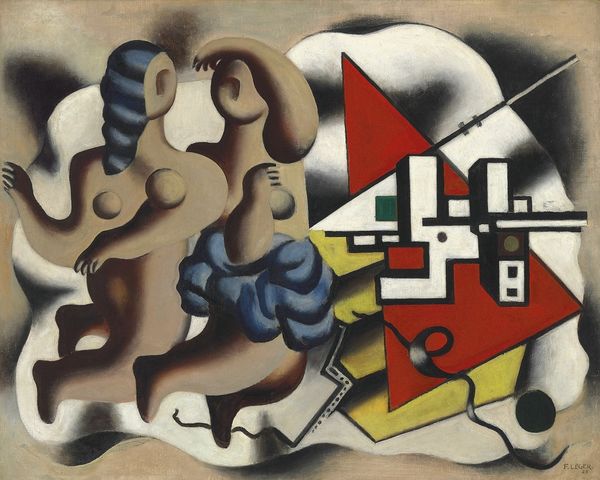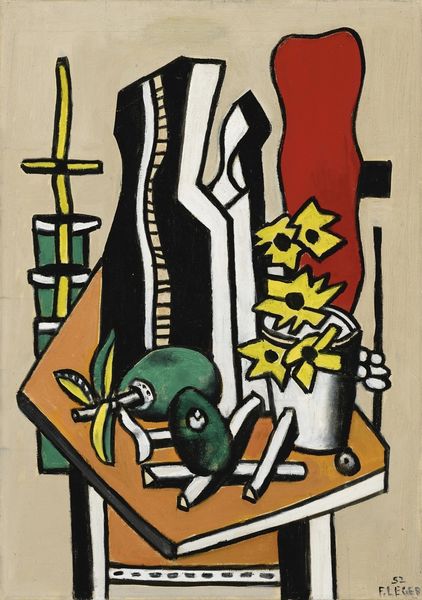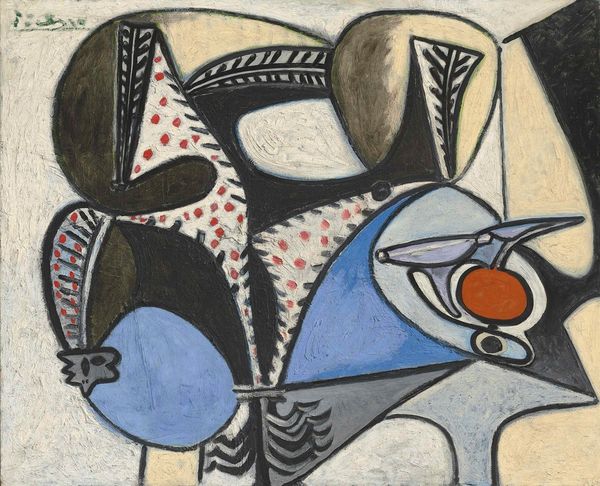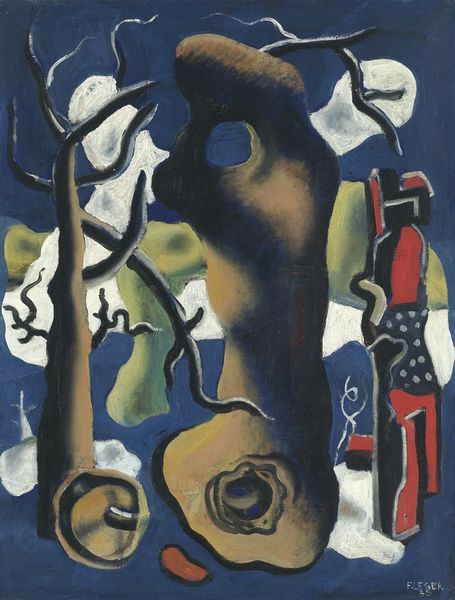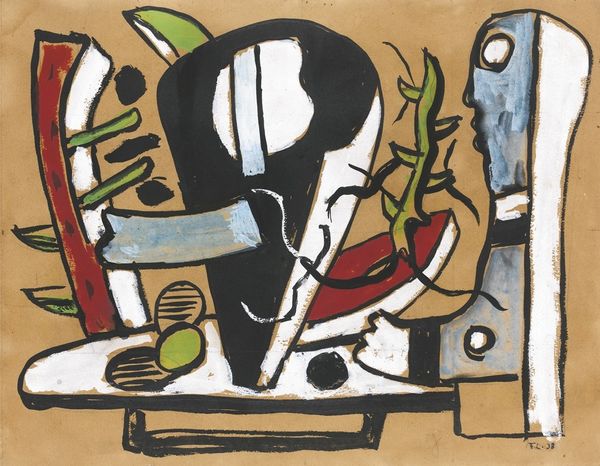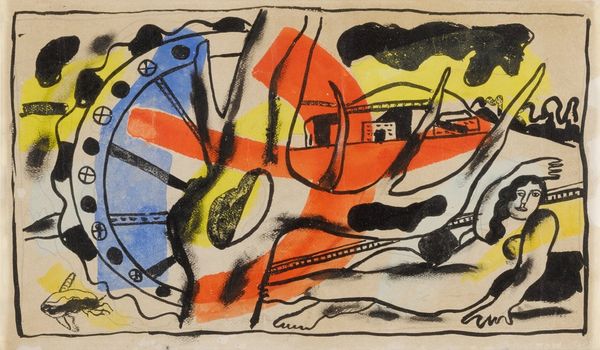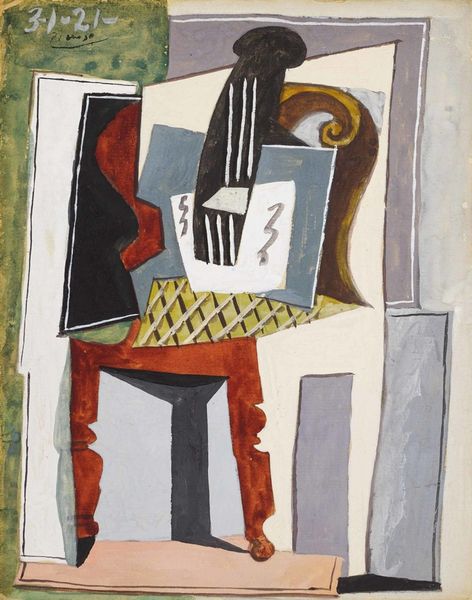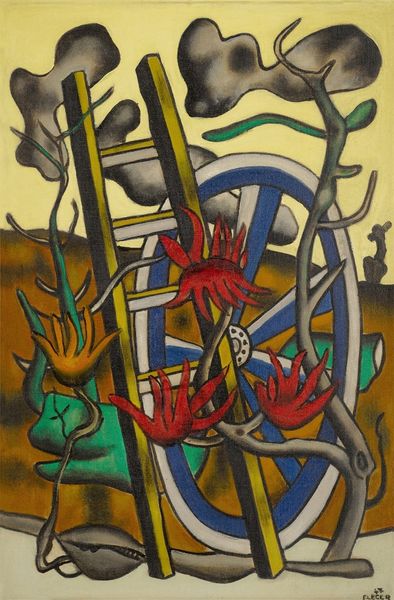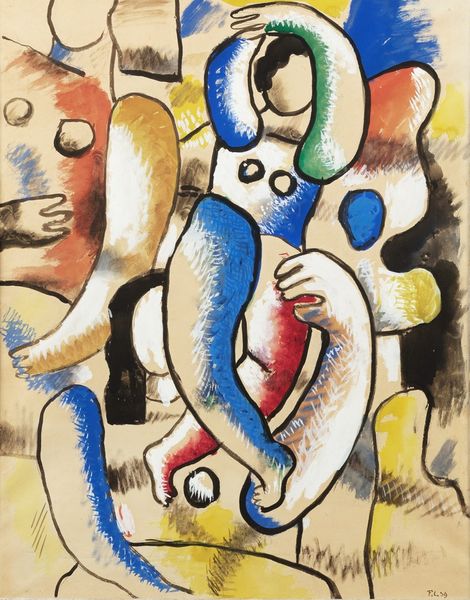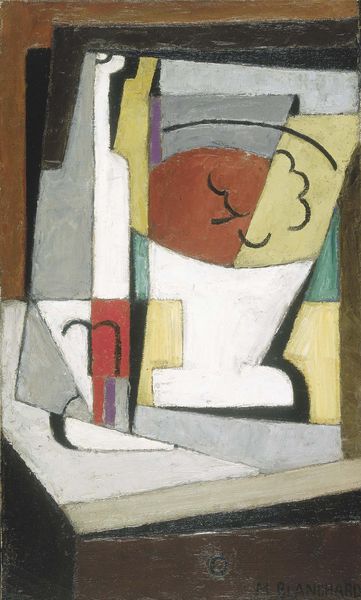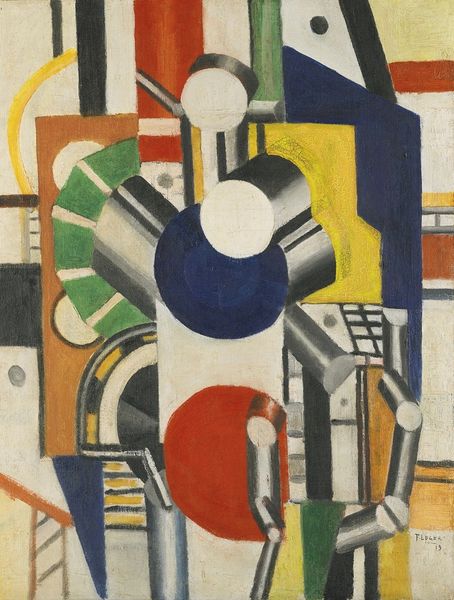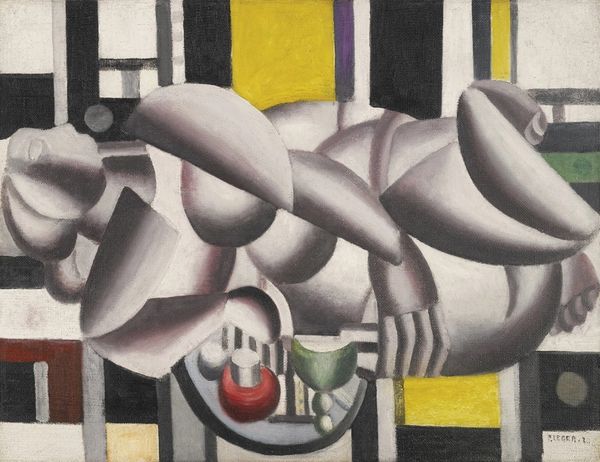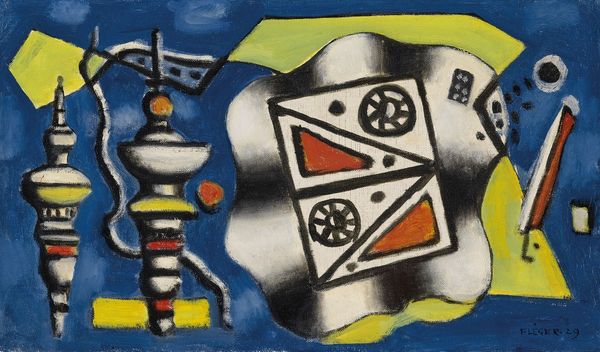
Copyright: Modern Artists: Artvee
Curator: Well, this is Fernand Léger’s "Nature morte," painted in 1932. He’s playing with Cubist and Surrealist ideas here. Editor: Hmm, playful! It’s a bit cheeky, isn't it? All these shapes remind me of a puzzle, the kind where the answer’s something silly. Curator: I think that lightness is key, Fernand Léger often critiqued the obsession with machines and industrialization and found balance using biomorphic forms against geometric blocks. Editor: Yeah, look at those curves. Against the hard-edged rectangles. Is that… is that supposed to be a human form sort of emerging in the middle? And are those fruit in the lower left, a surreal twist on classical themes? Curator: Precisely! The fleshy tones contrasted with the oranges and stark whites. Fernand Léger presents objects in an ambiguous space challenging how things were meant to be viewed, the public embraced this, during a challenging time after The Great Depression they viewed modernism through this lens. Editor: There's almost something cartoonish about it, like early animations from the era but without narrative—just pure shape and form flirting. Like an ode to our times. Curator: Exactly! It mirrors an epoch of shifts, movements, where boundaries blurred, and meanings were playfully questioned. Léger captures a certain vibrancy—it isn't just what he painted; it’s what he seems to suggest of things being fluid and changing constantly! Editor: Absolutely, a quiet chaos frozen in time, I enjoy its whimsy even when, I have a little bit of understanding. Thanks for clearing it all for me. Curator: Thank you, thinking more contextually gives an enriching layer and opens up another appreciation avenue.
Comments
No comments
Be the first to comment and join the conversation on the ultimate creative platform.
